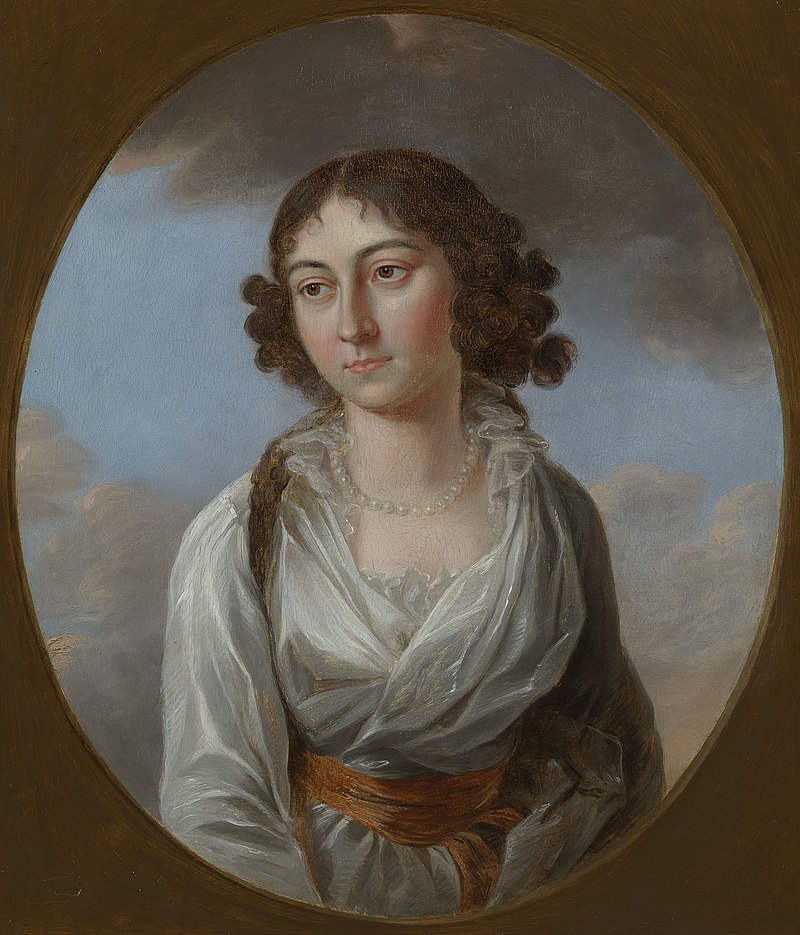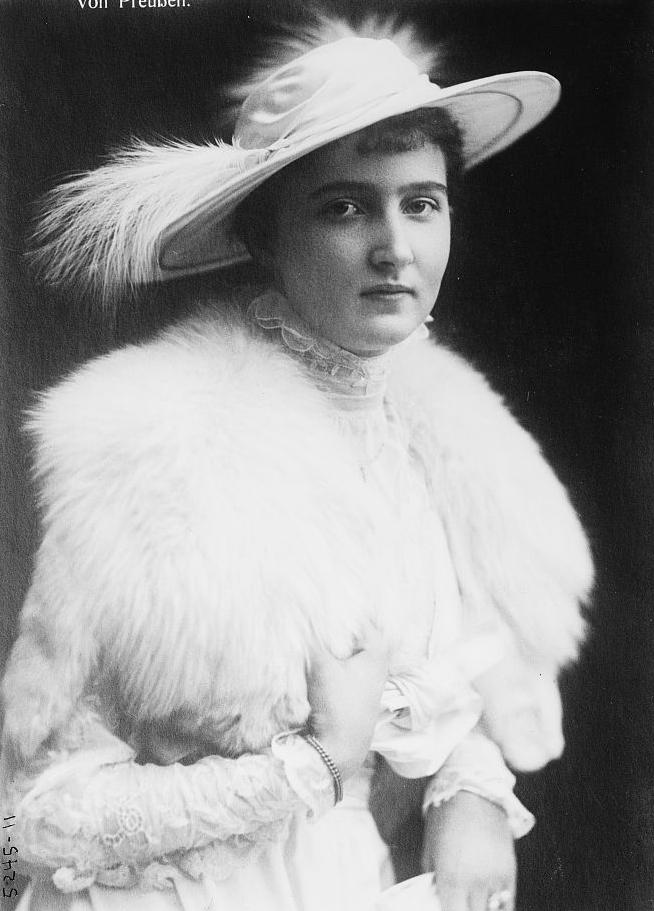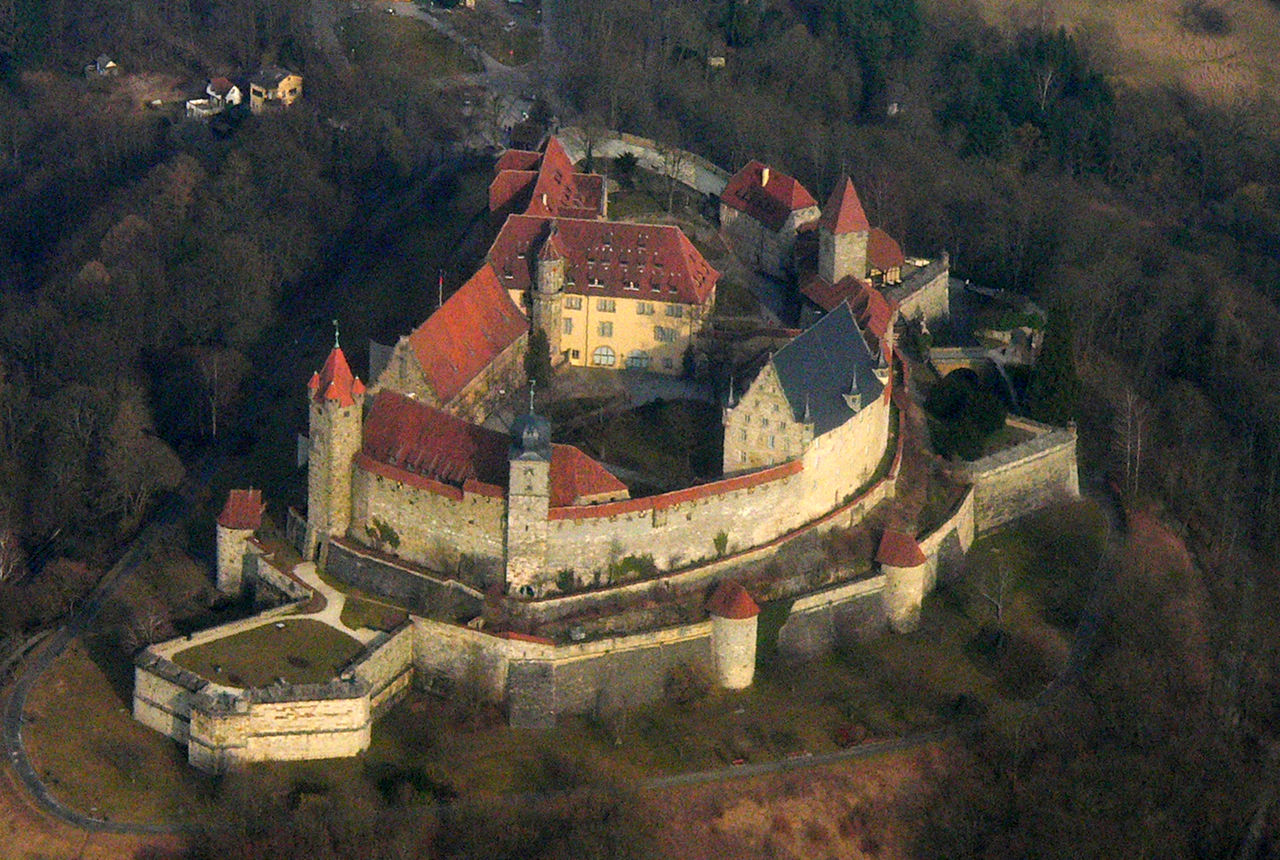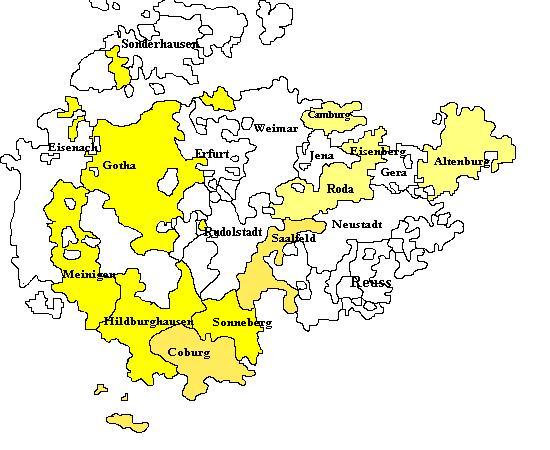by Susan Flantzer © Unofficial Royalty 2019

Antoinette of Saxe-Coburg-Saalfeld, Duchess of Württemberg; Credit – Wikipedia
Princess Antoinette of Saxe-Coburg-Saalfeld was the sister of Leopold I, the first King of the Belgians and an aunt to both Queen Victoria of the United Kingdom and her husband Prince Albert of Saxe-Coburg and Gotha. She was the second of the nine children and the second of the five daughters of Franz Friedrich Anton, Duke of Saxe-Coburg-Saalfeld and second wife Augusta Reuss of Ebersdorf. Antoinette Ernestine Amalie was born in Coburg, Duchy of Saxe-Coburg-Saalfeld, now in Bavaria, Germany on August 28, 1779.
- Sophie (1778 – 1835), married Emmanuel, Count von Mensdorff-Pouilly, had six sons
- Juliane (Grand Duchess Anna Feodorovna after marriage) (1781 – 1860), married Grand Duke Konstantin Pavlovich of Russia, no issue, marriage annulled in 1820; had two illegitimate children
- Ernst I, Duke of Saxe-Coburg-Gotha (1784 – 1844), married (1) Princess Louise of Saxe-Gotha-Altenburg, had two sons, Ernst II, Duke of Saxe-Coburg and Gotha and Prince Albert, husband of Queen Victoria; married (2) Duchess Marie of Württemberg, daughter of his sister Antoinette, no issue; had three illegitimate children
- Ferdinand (1785 – 1851), married Princess Maria Antonia Koháry, had three sons and one daughter including Ferdinand. King Consort of Portugal and Victoria, Duchess of Nemours; was the grandfather of Tsar Ferdinand I of Bulgaria
- Victoria (1786 – 1861), married (1) Emich Carl, 2nd Prince of Leiningen, had two children (2) Prince Edward, Duke of Kent, had one child Queen Victoria
- Marianne Charlotte (1788 – 1794)
- Leopold I, King of the Belgians (1790 – 1865), married (1) Princess Charlotte of Wales, only child of George, Prince of Wales (King George IV), died in childbirth along with her son (2) Princess Louise of Orléans, had three sons and one daughter including Leopold II, King of the Belgians and Charlotte, Empress Carlota of Mexico
- Franz Maximilian Ludwig (1792 – 1793)
In 1794, the Russian Empress Catherine the Great sent Count Andrei Budberg, a Russian diplomat, off to the courts of Europe to search for a potential bride for her grandson, Grand Duke Konstantin Pavlovich of Russia. Konstantin was the second son of the future Paul I, Emperor of All Russia and Sophie Dorothea of Württemberg. While traveling, Budberg became ill and stopped in Coburg where he was treated by Baron von Stockmar, the Coburg court’s physician. Stockmar learned of Budberg’s mission and suggested the daughters of the Duke of Saxe-Coburg-Saalfeld.

Antoinette in a painting sent to Russia for her possible groom Grand Duke Konstantin Pavlovich; Credit – Wikipedia
Once the prospect of a Coburg bride was approved by Catherine the Great, Antoinette and her elder sister Sophie and her next younger sister Juliane, accompanied by their mother, traveled to Saint Petersburg in August 1795. Her elder sister Sophie had all the prerequisites to be selected. She was the eldest and her mother wrote in the diary of the St. Petersburg trip that Empress Catherine liked Sophie the best. After several weeks, Konstantin chose her younger sister, 14-year-old Juliane, and the two became engaged. However, the marriage did not last long. By 1801, Juliane and Konstantin were living apart and eventually, their marriage was annulled.
Antoinette married Duke Alexander of Württemberg in Coburg, Duchy of Saxe-Coburg-Saalfeld on November 17, 1798. Alexander was the eleventh of the twelve children and seventh of eight sons of Friedrich II Eugen, Duke of Württemberg and Friederike of Brandenburg-Schwedt, a niece of Friedrich II (the Great), King of Prussia. Among Alexander’s siblings were his eldest brother Friedrich who would become the first King of Württemberg, his eldest sister Sophie Dorothea (Empress Maria Feodorovna) who was the second wife of Paul I, Emperor of All Russia and his sister Elisabeth who was the first of the four wives of the future Franz I, Emperor of Austria. Sadly, Elisabeth died at the age of 22 in childbirth.

Alexander of Württemberg; Credit – Wikipedia
Antoinette and Alexander had one daughter and four sons:
- Marie of Württemberg (1799 – 1860), married, as his second wife, her maternal uncle Ernst I, Duke of Saxe-Coburg and Gotha, no children
- Paul of Württemberg (1800 – 1801), died in infancy
- Alexander of Württemberg (1804 – 1881), married Princess Marie of Orléans, daughter of Louis-Philippe, King of the French, had one son
- Ernst of Württemberg (1807 – 1868), married Natalie Eischborn, had one daughter
- Friedrich Wilhelm Ferdinand of Württemberg (1810 – 1815), died in childhood
Alexander and Antoinette are the ancestors of the fifth branch of the House of Württemberg. When the eldest branch died out upon the death of King Wilhelm II of Württemberg in 1921, the ducal line became the new dynasty of the House of Württemberg.
Alexander began his military service in the Württemberg army in 1791 and then transferred to the Austrian army, serving in the campaign against France in 1796-1799. In 1799, on the recommendation of Alexander Vasilyevich Suvorov, a Russian military leader and a national hero, Alexander joined the Russian army. Antoinette and Alexander settled in Russia where he had a military and diplomatic career. Two of his sons, Alexander and Ernst, were generals in the Russian army.

Alexander’s sister Empress Maria Feodorova of Russia; Credit – Wikipedia
Alexander was the brother of Empress Maria Feodorova (born Sophie Dorothea of Württemberg), the wife of Emperor Paul I, and the maternal uncle of two future Emperors of All Russia, Alexander I and Nicholas I. A year after their arrival in Russia, Emperor Paul was assassinated and his son Alexander became Emperor. Antoinette took an active part in the life of the Russian Imperial Family. She was very friendly with Alexander I’s wife Empress Elizabeth Alexeievna, born Louise of Baden.
In the marital conflict between her sister Juliane, now Grand Duchess Anna Fedorovna, and her husband Grand Duke Konstantin Pavlovich, Antoinette sided with Konstantin, calling her sister “the shame of the family.” In 1817, Antoinette and her daughter Maria were among those who met Princess Charlotte of Prussia, the bride of Grand Duke Nicholas Pavlovich, the future Nicholas I, Emperor of All Russia.

Antoinette in later life; Credit – Wikipedia
Antoinette and her family traveled to Austria and Germany between 1819 – 1821 where they visited family and friends. When they returned to Russia, they settled in a magnificent palace in the Yusupov Garden in St. Petersburg.
Antoinette died from erysipelas at the age of 44 on March 14, 1824, in St. Petersburg, Russia. She was buried in Gotha, Duchy of Saxe-Coburg and Gotha, now in the German state of Thuringia, at Castle Friedenstein (link in German) in the Prince’s Crypt at the castle church next to her two sons who had died in childhood. Alexander survived his wife by nine years, dying on July 4, 1833, aged 62, at the Gotha residence of his son-in-law Ernst I of Saxe-Coburg and Gotha. He was buried next to his wife Antoinette and their two sons who had died in childhood.
This article is the intellectual property of Unofficial Royalty and is NOT TO BE COPIED, EDITED, OR POSTED IN ANY FORM ON ANOTHER WEBSITE under any circumstances. It is permissible to use a link that directs to Unofficial Royalty.
Works Cited
- De.wikipedia.org. (2019). Antoinette von Sachsen-Coburg-Saalfeld. [online] Available at: https://de.wikipedia.org/wiki/Antoinette_von_Sachsen-Coburg-Saalfeld [Accessed 4 Feb. 2019].
- De.wikipedia.org. (2019). Alexander Friedrich Karl von Württemberg. [online] Available at: https://de.wikipedia.org/wiki/Alexander_Friedrich_Karl_von_W%C3%BCrttemberg [Accessed 4 Feb. 2019].
- En.wikipedia.org. (2019). Princess Antoinette of Saxe-Coburg-Saalfeld. [online] Available at: https://en.wikipedia.org/wiki/Princess_Antoinette_of_Saxe-Coburg-Saalfeld [Accessed 4 Feb. 2019].
- En.wikipedia.org. (2019). Duke Alexander of Württemberg (1771–1833). [online] Available at: https://en.wikipedia.org/wiki/Duke_Alexander_of_W%C3%BCrttemberg_(1771%E2%80%931833) [Accessed 4 Feb. 2019].
- Ru.wikipedia.org. (2019). Антуанетта Саксен-Кобург-Заальфельдская. [online] Available at: https://ru.wikipedia.org/wiki/%D0%90%D0%BD%D1%82%D1%83%D0%B0%D0%BD%D0%B5%D1%82%D1%82%D0%B0_%D0%A1%D0%B0%D0%BA%D1%81%D0%B5%D0%BD-%D0%9A%D0%BE%D0%B1%D1%83%D1%80%D0%B3-%D0%97%D0%B0%D0%B0%D0%BB%D1%8C%D1%84%D0%B5%D0%BB%D1%8C%D0%B4%D1%81%D0%BA%D0%B0%D1%8F [Accessed 4 Feb. 2019].











 Prince Joachim of Prussia
Prince Joachim of Prussia























